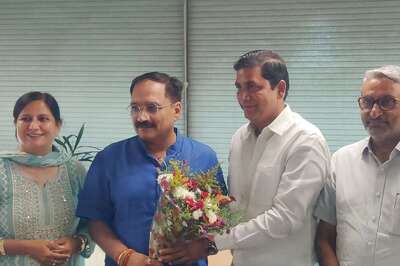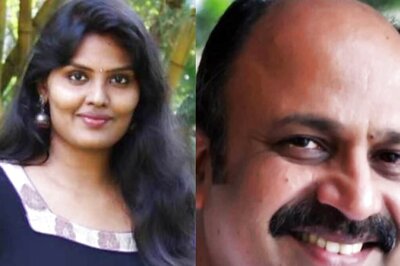
views
New Delhi: Beyond state-supplied news and private TV channels and newspapers lies another space for information and exchange of views -- the cyberspace.
Everybody is free to write and everybody stays hidden and anonymous. Bloggers -- still a small community in India -- are young and educated. They may not impact government’s decision-making, but their blogs do spark off healthy debates and generate reactions.
For instance, long after the candlelight vigils for Jessica Lall and fasts against dams were over, bloggers kept these debates alive for many days to follow. And now, with the quota debate at its peak, can the cyber community lie low?
Following the uproar over the government’s decision to reserve 27 per cent seats for the OBCs (Other Backward Classes), side by side the street protests, petitions and representations, an aggressive effort is on among the cyber-community to generate a public debate over the issue.
The cyber-citizens have, in fact, gone on to the extent of sending an online petition to the President of India, opposing the quota system. The website http://www.petitiononline.com/No_Quota/ is attracting a large number of visitors, who are signing the petition and expressing their views and suggestions on the subject.
The site has already registered more than 1 lakh signatures in protest against the quota proposal.
The petition was created by Sarsij Nayanam, a 25-year-old software engineer, who hails from Ranchi and is currently working at Hewlett Packard in Bangalore. Sarsij is a passout from the Birla Institute of Technology, Ranchi.
"When news channels aired the news about the proposed reservation, I got almost into a state of shock. I couldn’t believe that the government was actually thinking about such a move! Then I got an SMS to spread the opposition to the quota system, but I thought that SMSes have a serious flaw - they require money to be spent and so can’t be sustained for long. So I thought of starting an online petition," says Sarsij.
But unfortunately, the petition has not yet received any response from the President’s office. Regrets Sarsij, "Though I have sent the petition’s link to the President many times, I haven’t received any reply as yet."
But that isn’t deterring this young man. The petition is going to be followed by a peaceful demonstration. "I will ask people who signed the petition to come forward and oppose the government’s move by wearing a black tag."
PAGE_BREAK
A similar exercise happened when Narmada Bachao Andolan (NBA) activists were protesting in Delhi against the move to raise the height of the Sardar Sarovar Dam. In fact the liveliest debates in protest again this proposal were not held at Jantar Mantar or ministries, but at blogsites and chatrooms.
At www.sulekha.com, Aurosam wrote: “The NBA rightly took up the issue of rehabilitation and improved the visibility of the affected people in the past. But only mafia dons disobey the law of the land in a civilised society. NBA's present fight has shades of such defiance."
Lok-adhikar on www.blogspot.com said, "The Delhi Police did well to arrest Medha Patkar. The unjustified fast should have been dealt with firmly earlier, before Patkar’s condition became serious enough to cause concern and enabled her to gain sympathies from the gullible public."
"With the coming up of the Sardar Sarovar dam, irrigation in nearly 3,400 villages in drought-prone areas will benefit more than five million people.
Drinking water and power generated once the dam is complete will be a boon to the villagers to say the least," said Shome on www.sulekha.com.
Opinion posted at the Friends of the River Narmada website disagreed. "The Sardar Sarovar Dam is taking up over 80 per cent of Gujarat's irrigation budget but has only a minute per cent of cultivable land of Kutch, Saurashtra and North Gujarat under its command area," said the website.
“The displacement of people is simply immoral and therefore unacceptable. Given the evidence of past megadam schemes in India, we believe that the promised benefits will never be realised,” it said. Alternative technologies, not big dams, can provide water and energy to the people of the Narmada Valley.


















Comments
0 comment